The predictions are in!
We challenged students, researchers, and citizen scientists to predict the peak bloom date of cherry trees at five locations around the world: Washington D.C., USA; Kyoto, Japan; Vancouver, Canada; Liestal-Weideli, Switzerland and New York City, NY, USA. While it is known that cherry trees tend to bloom earlier each year as climates warm, complex weather patterns make annual predictions extremely difficult.
For the third year in a row, contestants took up our challenge to build statistical models that produce accurate and interpretable predictions. Their entries are eligible to receive prizes of $5,000 or more. In addition, their work will help scientists better understand the impacts of climate change.
Contestants vary widely in their predictions for 2024.
The calendars below show the days the contestants predict the peak bloom date will occur. Some believe peak bloom will occur in mid-March, while others believe it will occur in mid-April. When the entries are combined, the overall consensus is that the cherry trees will bloom between late March and early April. The average predicted peak bloom dates are March 26th for Washington D.C., March 27th for Liestal-Weideli, April 2nd for Kyoto and New York City, and April 3rd for Vancouver, BC—denoted on the calendars by 🌸.
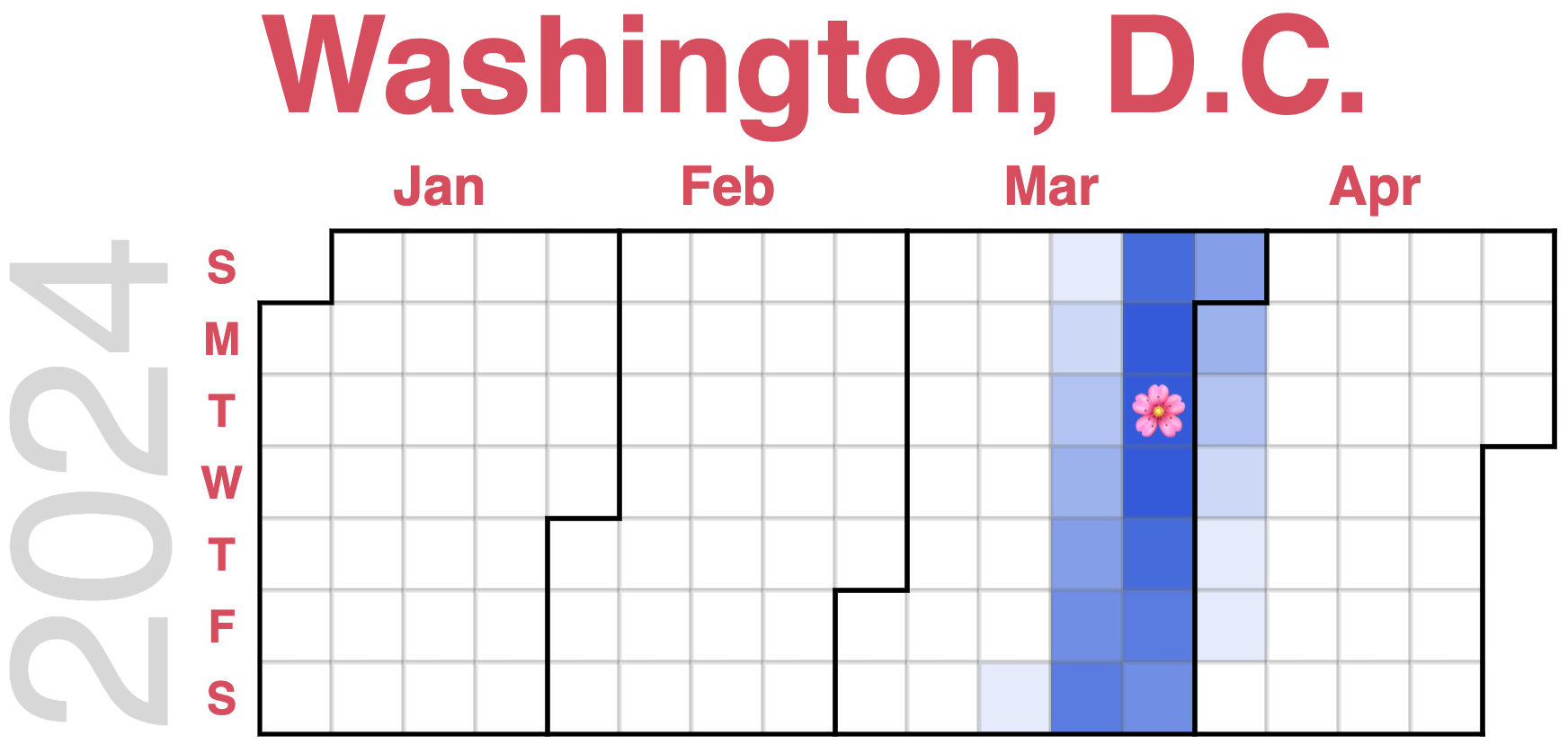
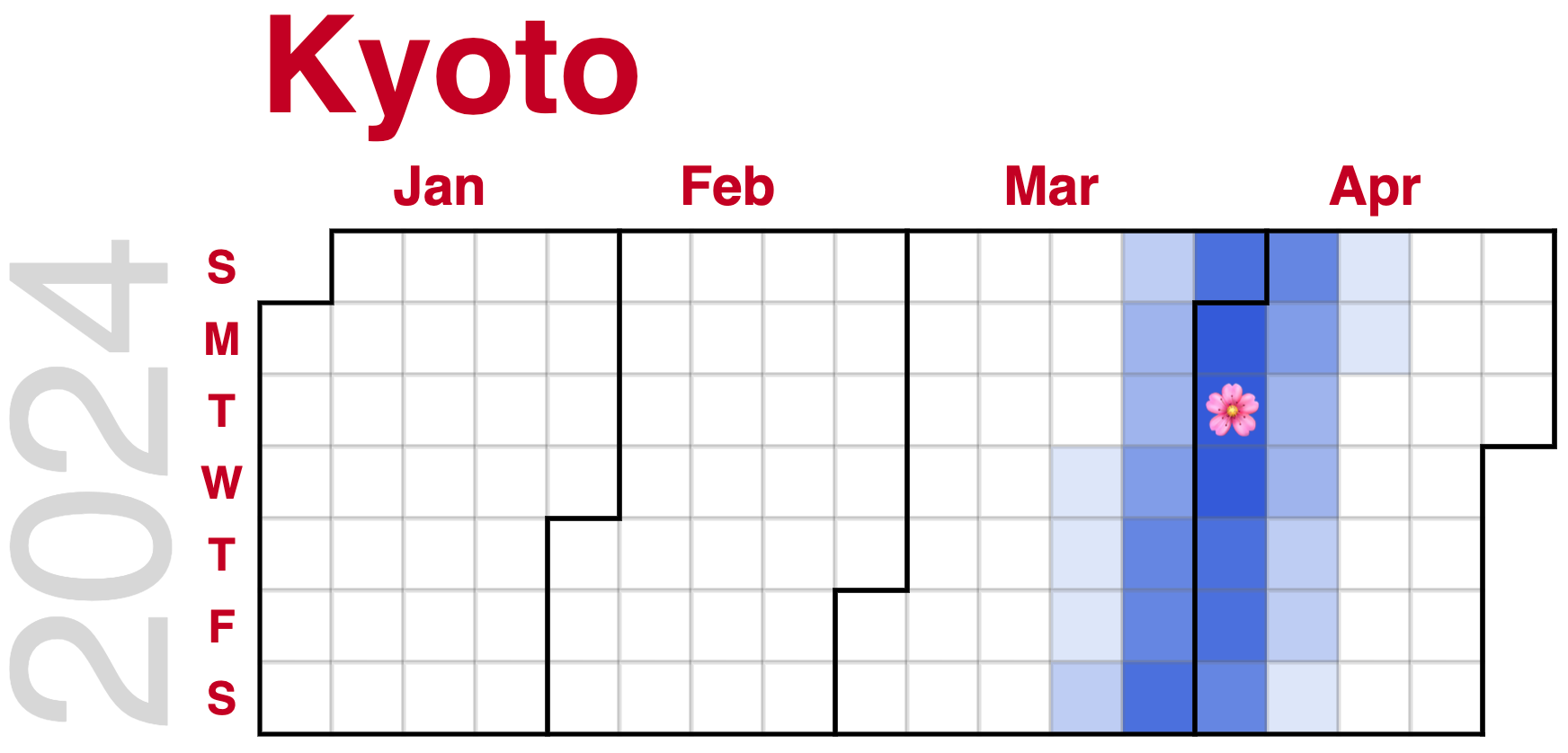
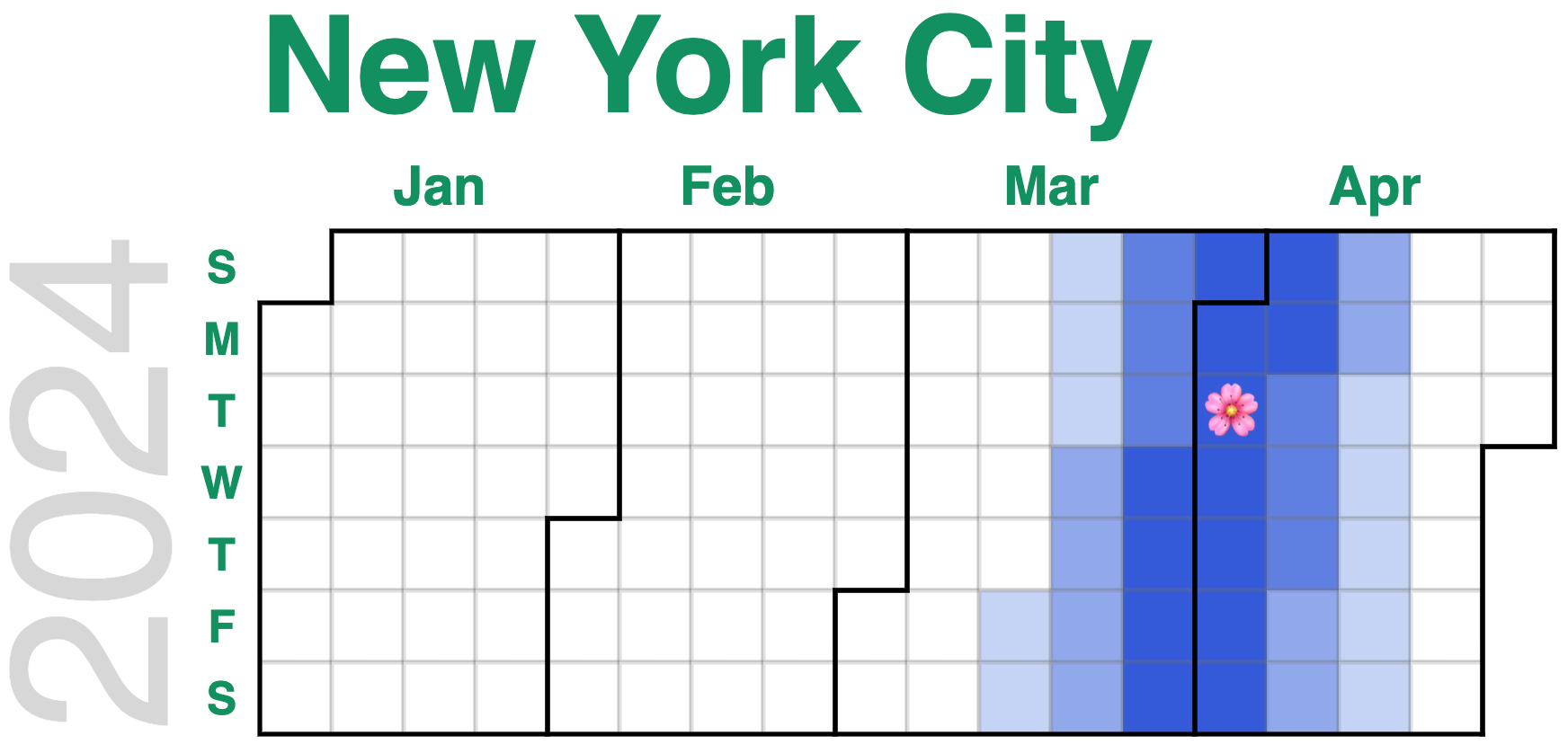
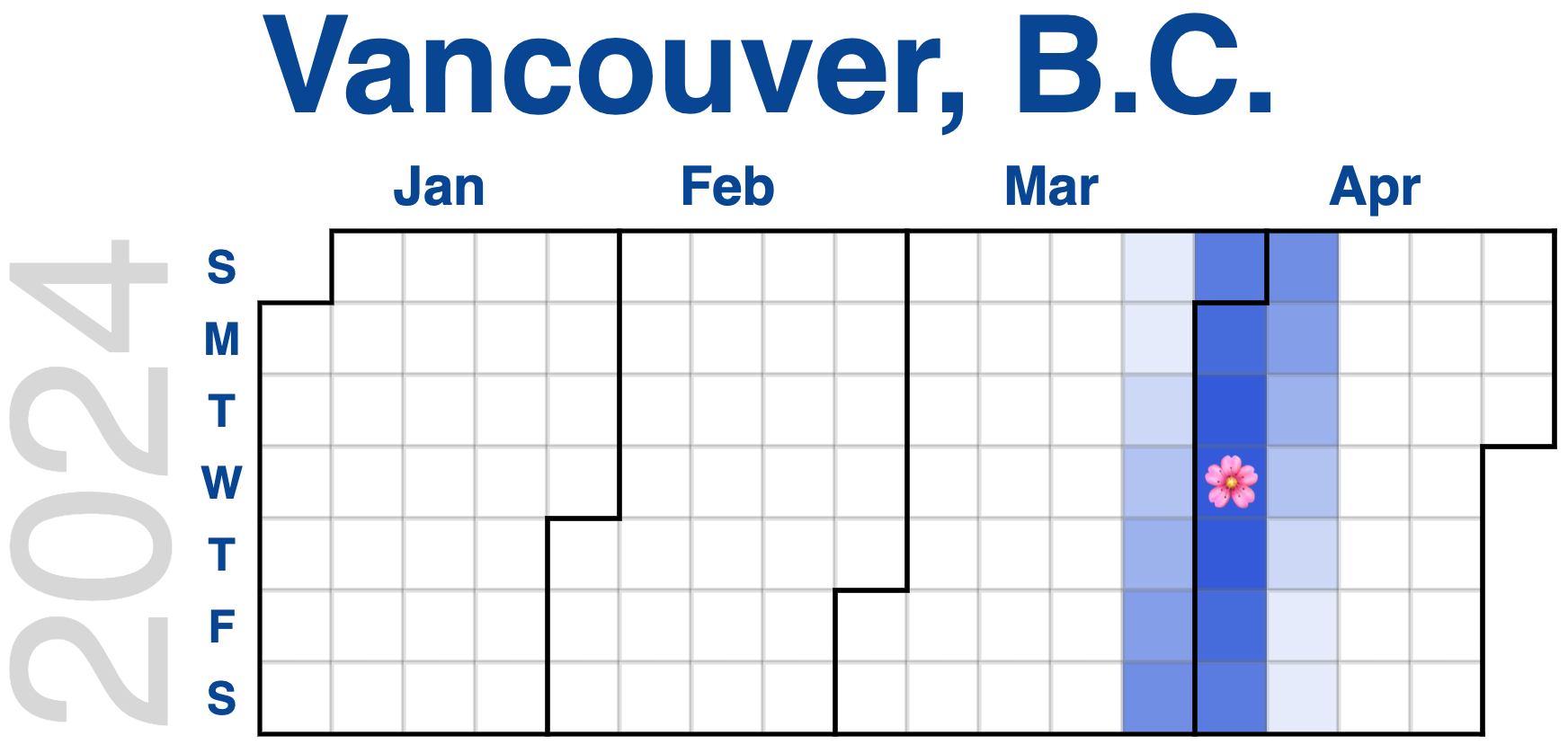
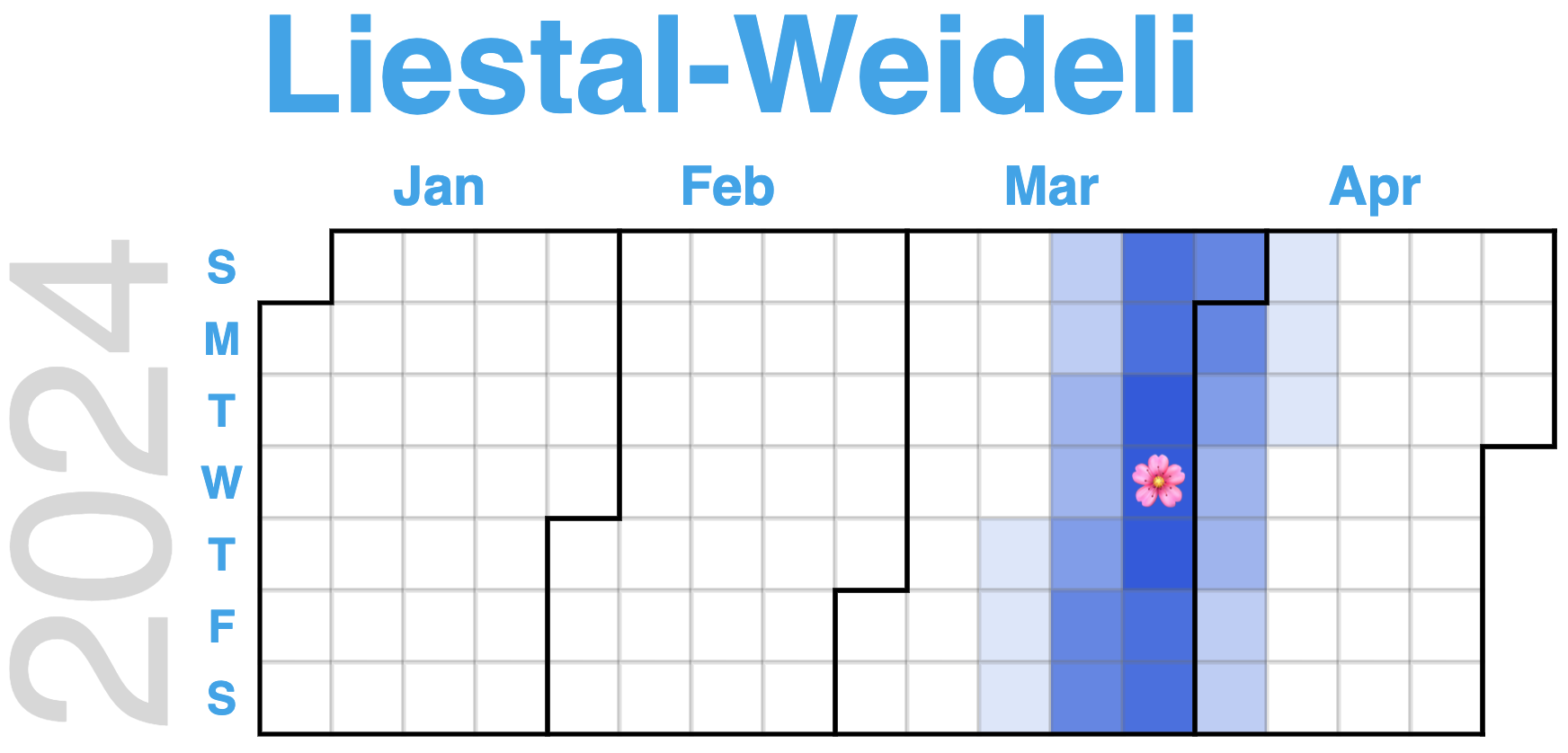
The contestants largely agree that the cherry trees will bloom between late March and early April. (The dark blue squares denote bloom days with high probability according to the entries, while the light blue squares denote bloom days with low probability. The probability was determined by approximating the histogram of days predicted by the contestants with a normal distribution.) The contestants agree the most about the bloom date of the Washington D.C. and Vancouver, BC locations and the least about the bloom date of the New York City location.
Overall, the contestants agree with the National Park Service prediction.
The National Park Service predicts the peak bloom of the Washington D.C. cherry trees will occur between March 23rd and March 26th, while our contestants predict between March 24th and March 27th on average. The contestants disagree with the Washington Post, which predicts between March 19th and March 23rd.
On average, the contestants somewhat disagree with the Japan Meteorological Corporation’s 6th forecast, which predicts that the peak bloom of the Kyoto cherry trees will occur on March 31st. (Note JMC provided predictions for Prunus × yedoensis while the contestants predicted Prunus jamasakura. These species have similar but not identical bloom dates.)
For New York City and Vancouver, BC, where there is almost no historical data, the average prediction is April 2nd and April 3rd, respectively. The Vancouver Cherry Blossom Festival posts updates on the progress of their cherry trees on the UBC Botanical Garden Forums.
Who will win the 2024 International Cherry Blossom Prediction Competition?
Stay tuned! We hope to announce the winners in early May. We will also announce the winners of the Washington Statistical Society Award for most accurate prediction interval. We thank the contestants for their hard work. In addition, a big thanks to the American Statistical Association, Washington Statistical Society, Caucus for Women in Statistics, George Mason University’s Department of Statistics, Columbia University’s Department of Statistics, the ASA Section on Statistical Learning and Data Science, Posit, and Real World Data Science for their support, and partnerships with the International Society of Biometeorology, MeteoSwiss, USA National Phenology Network, the Washington Square Park Eco Projects, the Local Nature Lab, and the Vancouver Cherry Blossom Festival—as well as Mason’s Institute for Digital InnovAtion, Institute for a Sustainable Earth, and the Department of Modern and Classical Languages. We also thank our judges Lelys Bravo de Guenni, Cheryl Brooks, Mason Heberling, Nathan Lenssen, Will Pearse, Christine Rollinson, and Ed Wu.
